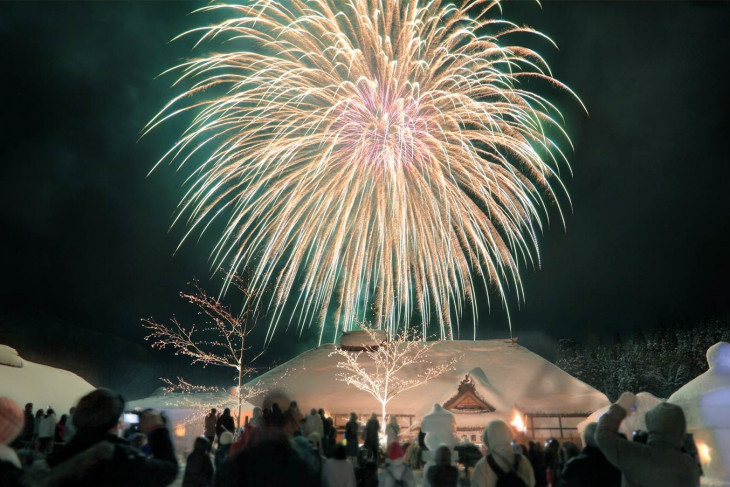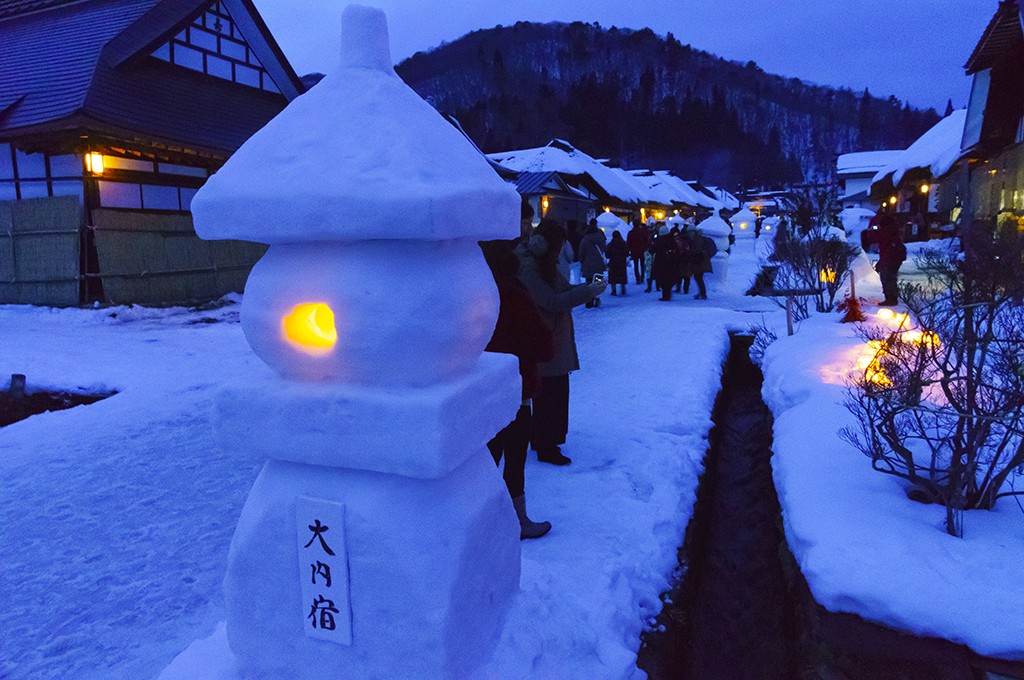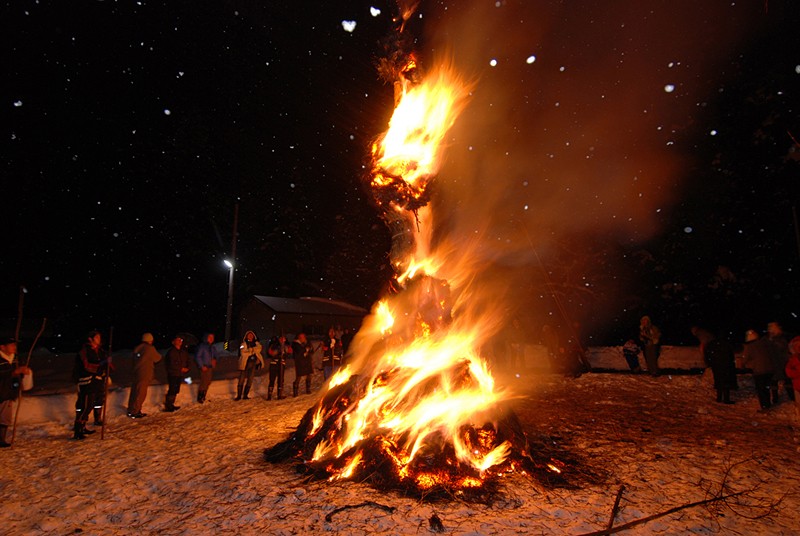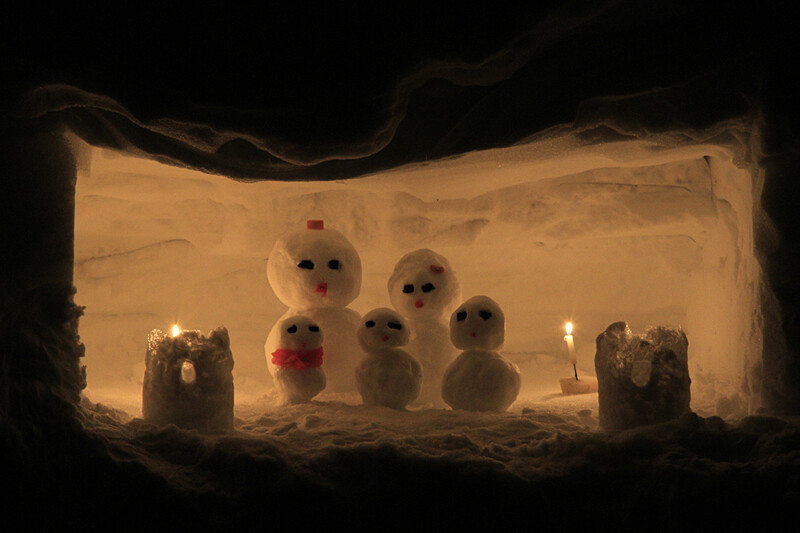
In the Aizu region located in the mountainous part of Fukushima, many festivals are held weaving together the beautiful contrasts of fire and snow during the coldest part of the winter season. The snow serves as a pure white molding material that projects the feelings of the people of Aizu, themselves shaped by the beauty and severity of winter. The shimmering flames that decorate the tranquil frozen towns gently warm hearts and bodies while bringing a deep sense of mystery to the wintery night. Together with the crisp winter air, this otherworldly scene of wonder will form an indelible memory for couples for many years to come.
The people of the Aizu region spend much of the winter in a deep layer of snow. While they are snowed in, they wait for the distant arrival of spring engaged in crafts such as basket and textile weaving and candle making. The simplicity of the diverse handiwork speaks of the overflowing vitality of the people. That spirit is very much alive today and deeply colors the mood of the festivals that continue to be celebrated in the towns of Aizu. Through these festivals that pray for good health and abundant harvests, you will experience a sense of the spirit of Japanese culture that has long respected the power of nature and given thanks for the changes of the seasons.

Ouchi-juku Snow Festival
In the second week of February every year, a magical snow festival is held in the town of Ouchi-juku which once prospered as a post station on the road to Edo (Tokyo), and where one can still see traditional thatched roofs lining the streets. Men of the village, adorned in white wraps sanctified at the Shinto shrine, wield torches that burn with flames lit by the chief priest of the shrine as they run through the main street of Ouchi-juku. The village becomes embraced in a gentle light as each of the snow lanterns that line the streets are lit with that same flame. Great fireworks are set off when the last snow lantern is lit, creating an impressive climax as the colorful light of the fireworks is reflected off the snow.

Mishima no Sainokami Festival
In Mishima, a town that often experiences over two meters of snow, a sacred tree is stood in the snow as dwellings for the gods, and then burned as a bonfire, along with the Shinto New Year’s decorations, in the Mishima no Sainokami Festival held on January 15. Trees are prepared especially for the festival. The flames that reach up to great heights serve to light up the charcoal black skies of winter.
Tips
Another thing you will encounter in the snow festivals of this snow-bound country is the many snow huts. The snow huts serve as camping tents constructed by piling up snow thickly and then digging out the interior. While they may look cold, in fact they stop the wind blowing in and can be quite comfortable. The light of the candles within reflects off the snowy walls, filling the interior space with soft luminance. If you discover a snow hut on your journey, please join the other people within. Share a cup of sake or amazake (sweet sake) made at one of the many breweries in this snow country, and enjoy your time together with your family, friends, or partner.
The Oku Aizu region, where many of the snow festivals take place, is an area with limited access. While additional shuttle buses and special trains are operated during the period, make sure to research your journey there and back before leaving. Further, temperatures drop to the freezing point at night in the Aizu region. Make sure to adequately prepare for the cold. It is a good idea to purchase hokkairo (disposable heating pads) in advance and not only put them in your pockets but in the bottom of your shoes as well.

Fukushima's Other Snow Festivals
Aizu Painted Candle Festival (Second Friday & Saturday of February)
Tadami Snow Festival (Second Saturday & Sunday of February)
Nakayama Setsugekka Snow Festival (Third Saturday of February)


